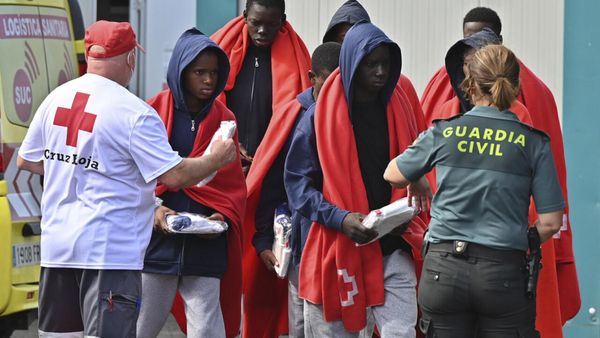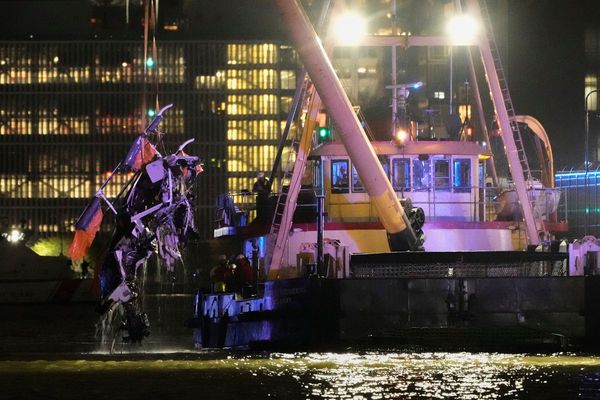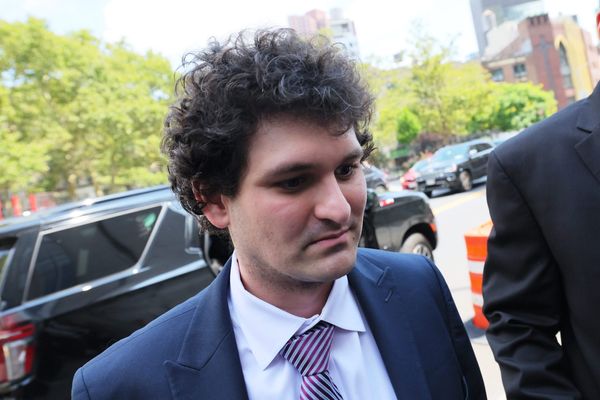MIAMI — The arrival of nearly 700 Haitians in a string of dramatic migrant landings near an exclusive wealthy enclave in the Upper Florida Keys over the past four months suggests that those behind the rise in Haitian boat migration are getting bolder, and using new trafficking routes to get to the United States.
While smugglers are still ferrying desperate Haitians in overloaded, battered sailboats from Haiti, the clandestine voyages have become much better organized and sophisticated, U.S. and Haitian authorities say. The boats are now bigger and even engine-powered as opposed to sail, and smugglers are employing GPS technology and other methods to evade detection by the U.S. Coast Guard.
“They are taking the routes that will lead them to Key West and elsewhere via areas with less surveillance by the U.S. Coast Guard,” said Eric Prevost Junior, the director general of Haiti’s Maritime and Navigation Service. “That’s the tendency; they are changing routes from time to time, because there are routes they take that always lead to interception by the U.S. Coast Guard.”
Since November, four overloaded boats crammed with Haitians fleeing desperate conditions in Haiti have ended up near the ultra exclusive Ocean Reef Club in North Key Largo, located at the end of a remote two-lane highway that was made famous by drug traffickers in the 1970s and ‘80s.
The most recent landing involved 356 Haitians, whose battered wooden freighter stopped just 200 yards from the shoreline of the resort Sunday after running aground. As the boat tilted on its side, 158 migrants jumped into the ocean and swam to the shore, their rush to freedom captured on video. Another 198 who remained aboard the boat were later transferred to a U.S. Coast Guard cutter for repatriation to Haiti.
Two days earlier, another overloaded sailboat, this one jam-packed with 123 Haitians, was stopped by U.S. Coast Guard about 10 miles off Anguilla Cay, a Bahamian island just north of Cuba.
U.S. Coast Guard Capt. Benjamin Golightly of District 7, which oversees Florida and Puerto Rico, would not say whether Haitian migrants trying to illegally enter the U.S. by sea are taking new routes, citing not wanting to disclose Coast Guard “patrol patterns.”
But anecdotal evidence and interviews with those monitoring the recent uptick suggests that boats are using the coastlines and territorial waters of Cuba to reach the Keys, which are located just 90 miles north of the communist island.
Last fall, after several Haitians arrived in the eastern and central provinces of Cuba, the country’s foreign ministry confirmed the arrival of an unspecified number of Haitians via boat in a bid to reach the U.S. By the end of last year, Cuba had repatriated 1,362 Haitians, according to the International Office for Migration, the U.N. agency tasked with receiving returning migrants.
But even as some boats carrying Haitians are interdicted by the Cubans, there are also reports of them being helped in their journey.
This week, after a group of Haitian migrants were picked up in Cabo Rojo, a town in the southwest corner of Puerto Rico, a local newspaper reported that the migrants had reportedly left from the quake-ravaged city of Jeremie along the southwest peninsula of Haiti. The waters of the Caribbean reportedly took them toward Cuba where another boat found them and gave them food and gas, and redirected them to Puerto Rico.
Golightly declined to provide specifics on how Cuba handles Haitian boats passing through its waters, other than to say each case is unique.
“We make every attempt to work with our partners, both nationally and internationally, to stop them at the point of origin,” he said, adding that the U.S. Coast Guard is always on regular patrols throughout the straits of Florida, the Bahamas and the Windward and Mona passages and areas north of Cuba.
Still, in November when the first of the boatloads arrived, some of the 63 Haitians said they had been at sea for three weeks.
“Our focus remains on trying to safely stop those voyages or working with anyone who is in a position to potentially safely stop those voyages to where we don’t have vessels capsizing and potentially hundreds of people lost at sea,” Golightly said.
Haitian emigre Jean-Pierre, who arrived in the U.S. five years ago, said his wife and three young children, ages 9, 6, and 4, were among the 123 people the Coast Guard stopped off Anguilla Cay last week.
They were packed on the deck of the wooden vessel, which a U.S. Coast Guard aircraft filmed bobbing up and down in the high seas.
“When I see that video, I cried,” said Jean-Pierre, who did not want to give his full name, nor that of his wife, fearing for his family’s safety.
He spoke to the Miami Herald after confirming with Bahamian authorities that his family was in custody. He said Bahamian authorities would not let him speak to his wife and were planning to send them back to Haiti.
“They spent five days at sea, and now they’re going to go back,” he said. “Psychologically, they’re affected. We don’t know if there’s anything we can do.”
Over the past five months, the U.S. Coast Guard has interdicted 1,152 Haitians trying to reach Florida and the U.S. territory of Puerto Rico.
The surge comes after years of negligible sea migration by Haitians, who over the last decade had chosen the dangerous jungles of South America and tenuous land borders of Central America to try to reach the U.S.
But all that changed after last July’s assassination of the country’s president, Jovenel Moise, and the deadly magnitude 7.2 earthquake that followed five weeks later in the country’s southern peninsula. Both helped fueled an increase in migration, along with an escalation in gang-related violence and kidnappings. Combined with deepening political and economic crises, Haitians are being pushed to take unimaginable risks, a study by IOM found.
Jean-Pierre said his wife “was running to save her life as well as that of my three little boys,” after a recent gang rampage in the commune of Croix-des-Bouquets, east of the Port-au-Prince.
The gang, 400 Mawozo, is the same one linked to the October kidnapping of 17 missionaries who were held captive for weeks before the last of them was released after two months. The armed group is being accused of trying to turn the vast area, which leads to the border with the Dominican Republic, into a no-man’s land similar to the city of Martissant. Located at the southern edge of Port-au-Prince, Martissant has become impassable and seen the forced the displacement of over 20,000 Haitians since June as gangs also cut access to those living in the quake-struck region.
“They can’t do anything. The children can’t go on the streets. People can’t go outside to buy food. It’s impossible,” Jean Pierre said, adding that his wife felt she had no choice but to risk her and her children’s lives by taking to the high seas. “They were trying to avoid the dangers in an unlivable country like Haiti.”
Golightly said migrant smugglers have ramped up their efforts to persuade people to make the dangerous journey after the assassination and the quake.
“That’s probably the one difference I think we saw from back in the ‘90s where it was perhaps a little ad hoc,” he said during a Herald interview.
One reason is the access nowadays to technology that wasn’t available then.
“If you just look at the availability of things like GPS, cellphones, cellphone applications to where people are able to coordinate and share information, that’s where we may see some things that perhaps we hadn’t seen several years ago,” Golightly said.
The Haitian Coast Guard has just four boats to patrol the country’s disproportionately long horse-shoe shaped 1,100 miles coastline, and none is stationed at either of country’s most most popular launching pads for smugglers, — Ile de la Tortue and the mainland city of Port-de-Paix, both on the northwest coast — said Jean Pedro Mars, the commander of the Haitian Coast Guard.
Mars said when he or any of his 200 officers receives word of a pending voyage, they have to deploy a boat from northern Cap-Haitien up the coast.
“It’s not a go-fast boat to allow us to rapidly intercept a boat if we hear something,” he said. “Also when you do receive the information, you don’t always get it in time.”
Last week Haitian Coast Guard officers spent 12 hours patrolling the coastline alongside their U.S. counterparts looking for boat building activity and a gathering of prospective migrants, to no avail.
One indicator sometimes of a pending trip is a Vodou ceremony. Before taking such a risky voyage, it’s customary for the boat captain, and even passengers, to attend a ceremony so that a Vodou priest bless the trip and invoke the Vodou deity Met Agwe, the protector of the sea.
The slogan adopted by traffickers is “Miami Tet Dwat,” which loosely translates in Haitian Creole to “Miami Straight Ahead.”
A source in Port-de-Paix told the Herald that over the past few days two boats had already departed for the U.S., while four to five voyages were in the planning for the weekend.
While the gated Ocean Reef Club is known more for hosting dignitaries such as former President Barack Obama, the off-the-beaten path, two-lane Card Sound Road is more commonly known as a past hot spot for drug traffickers, rather than human smugglers, trying to evade law enforcement.
“Back in the day when narcotics were being run, Card Sound and areas around North Key Largo were popular,” said Capt. David Dipre, a veteran Florida Fish and Wildlife Conservation Commission officer.
Dipre doesn’t recall the Card Sound area being a landing spot for migrants. But he noted that law enforcement is an unpredictable business, just as trafficking is, and trends change.
“As often as I say things are usually the same, by the same token, there’s always something new,” Dipre said.
Monroe County Sheriff Rick Ramsay, who’s been a cop in the Keys for 35 years, said that during the Cocaine Cowboys heyday of South Florida drug smuggling, Card Sound Road was used as a common drop-off spot due to its remote location.
Being so isolated also meant that law enforcement couldn’t get there right away if there were reports of smuggling, Ramsay said.
But the sheriff said Card Sound Road has never been a frequent landing spot for migrants or human smuggling in the past, and he believes people now must be deliberately setting course for the area.
“It’s hard to believe that all of these landings can just be a coincidence, especially coming in such a pinpoint area time and time again,” he said.
———







